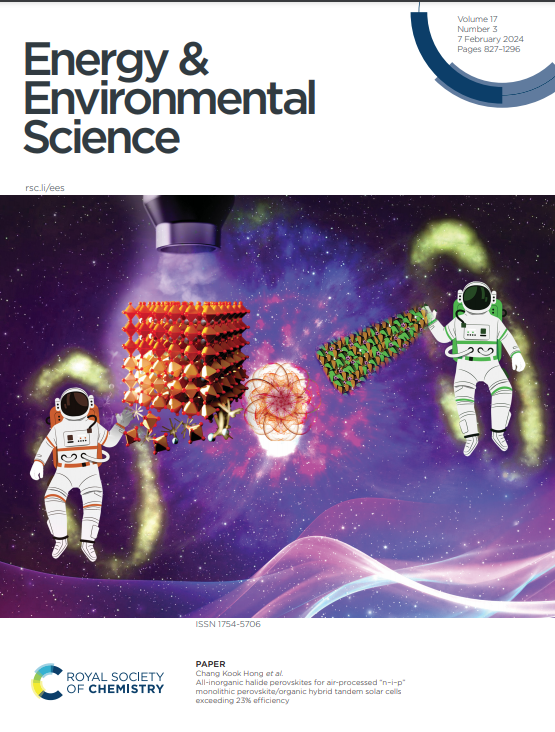Breaking the H2O dissociation-OH desorption scaling relationship in alkaline hydrogen evolution by oxophilic single atom M1-Run electrocatalyst
IF 32.4
1区 材料科学
Q1 CHEMISTRY, MULTIDISCIPLINARY
引用次数: 0
Abstract
Alkaline electrochemical hydrogen evolution reaction (HER) has been a hot topic in energy catalysis and engineering. Theoretically, intensifying OH adsorption on electrocatalyst is vital for promoting water dissociation and thus supplying sufficient proton to expedite alkaline hydrogen evolution. However, overbinding of OH largely impedes the recyclability of active centers and even causes catalyst deactivation. Herein, we report that H2O dissociation and OH desorption presents an undesirable scaling relationship, which poses a major stumbling block to attain maximized alkaline HER performance. While, dispersing highly oxophilic metal centers to single atoms greatly facilitates OH desorption and meanwhile keeps the high oxophilicity-enabled superb water dissociation merit, hence breaking the proportionality limitation. Based on this finding, a remarkable La1-Run catalyst is rationally synthesized, which operates durably at an ampere-level current density of 1000 mA cm-2 for over two months with an ultra-low cell voltage of 1.74 V, showing great promise for practical applications.求助全文
约1分钟内获得全文
求助全文
来源期刊

Energy & Environmental Science
化学-工程:化工
CiteScore
50.50
自引率
2.20%
发文量
349
审稿时长
2.2 months
期刊介绍:
Energy & Environmental Science, a peer-reviewed scientific journal, publishes original research and review articles covering interdisciplinary topics in the (bio)chemical and (bio)physical sciences, as well as chemical engineering disciplines. Published monthly by the Royal Society of Chemistry (RSC), a not-for-profit publisher, Energy & Environmental Science is recognized as a leading journal. It boasts an impressive impact factor of 8.500 as of 2009, ranking 8th among 140 journals in the category "Chemistry, Multidisciplinary," second among 71 journals in "Energy & Fuels," second among 128 journals in "Engineering, Chemical," and first among 181 scientific journals in "Environmental Sciences."
Energy & Environmental Science publishes various types of articles, including Research Papers (original scientific work), Review Articles, Perspectives, and Minireviews (feature review-type articles of broad interest), Communications (original scientific work of an urgent nature), Opinions (personal, often speculative viewpoints or hypotheses on current topics), and Analysis Articles (in-depth examination of energy-related issues).
 求助内容:
求助内容: 应助结果提醒方式:
应助结果提醒方式:


